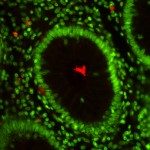Link to Pubmed [PMID] – 27148494
Front Cell Infect Microbiol 2016;6:45
Shigella is a pathovar of Escherichia coli comprising four groups, Shigella flexneri, Shigella sonnei, Shigella dysenteriae, and Shigella boydii, each of them, with the exception of S.sonnei, comprising several serotypes. Shigella accounts for the majority of dysentery causing infections occurring world-wide each year. Recent advancements in the Shigella field have led to a better understanding of the molecular mechanisms underlying host epithelial cell invasion and immune cell function manipulation, mainly using S. flexneri as a model. Host-cell invasion is the final step of the infection process, as Shigella’s virulence strategy relies also on its ability to survive hostile conditions during its journey through the gastro-intestinal tract, to compete with the host microbiota and to cross the intestinal mucus layer. Hence, the diversity of the virulence strategies among the different Shigella species has not yet been deeply investigated, which might be an important step to understand the epidemiological spreading of Shigella species worldwide and a key aspect for the validation of novel vaccine candidates. The recent development of high-throughput screening and sequencing methods will facilitate these complex comparison studies. In this review we discuss several of the major avenues that the Shigella research field has taken over the past few years and hopefully gain some insights into the questions that remain surrounding this important human pathogen.

